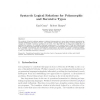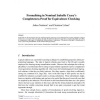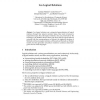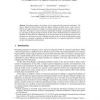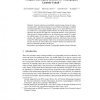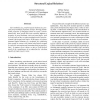104
Voted
MSCS
2008
15 years 16 days ago
2008
Abstract. Software security can be ensured by specifying and verifying security properties of software using formal methods with strong theoretical bases. In particular, programs c...
ENTCS
2007
15 years 16 days ago
2007
The method of logical relations assigns a relational interpretation to types that expresses operational invariants satisfied by all terms of a type. The method is widely used in ...
90
Voted
ENTCS
2008
15 years 20 days ago
2008
In the book on Advanced Topics in Types and Programming Languages, Crary illustrates the reasoning technique of logical relations in a case study about equivalence checking. He pr...
103
Voted
ICALP
2000
Springer
15 years 4 months ago
2000
Springer
Lax logical relations are a categorical generalisation of logical relations; though they preserve product types, they need not preserve exponential types. But, like logical relatio...
126
Voted
ESOP
2006
Springer
15 years 4 months ago
2006
Springer
We present a sound and complete proof technique, based on syntactic logical relations, for showing contextual equivalence of expressions in a -calculus with recursive types and imp...
111
Voted
ECAI
2006
Springer
15 years 4 months ago
2006
Springer
Semantic matching determines the mappings between the nodes of two graphs (e.g., ontologies) by computing logical relations (e.g., subsumption) holding among the nodes that corresp...
127
Voted
ASIAN
2006
Springer
15 years 4 months ago
2006
Springer
Interesting properties of programs can be expressed using contextual equivalence. The latter is difficult to prove directly, hence (pre-)logical relations are often used as a tool ...
92
Voted
CSL
1999
Springer
15 years 4 months ago
1999
Springer
Abstract. We study a weakening of the notion of logical relations, called prelogical relations, that has many of the features that make logical relations so useful but having furth...
100
Voted
CSL
2004
Springer
15 years 6 months ago
2004
Springer
Abstract. Security properties are profitably expressed using notions of contextual equivalence, and logical relations are a powerful proof technique to establish contextual equiva...
119
click to vote
LICS
2008
IEEE
15 years 7 months ago
2008
IEEE
Tait’s method (a.k.a. proof by logical relations) is a powerful proof technique frequently used for showing foundational properties of languages based on typed λ-calculi. Histo...

